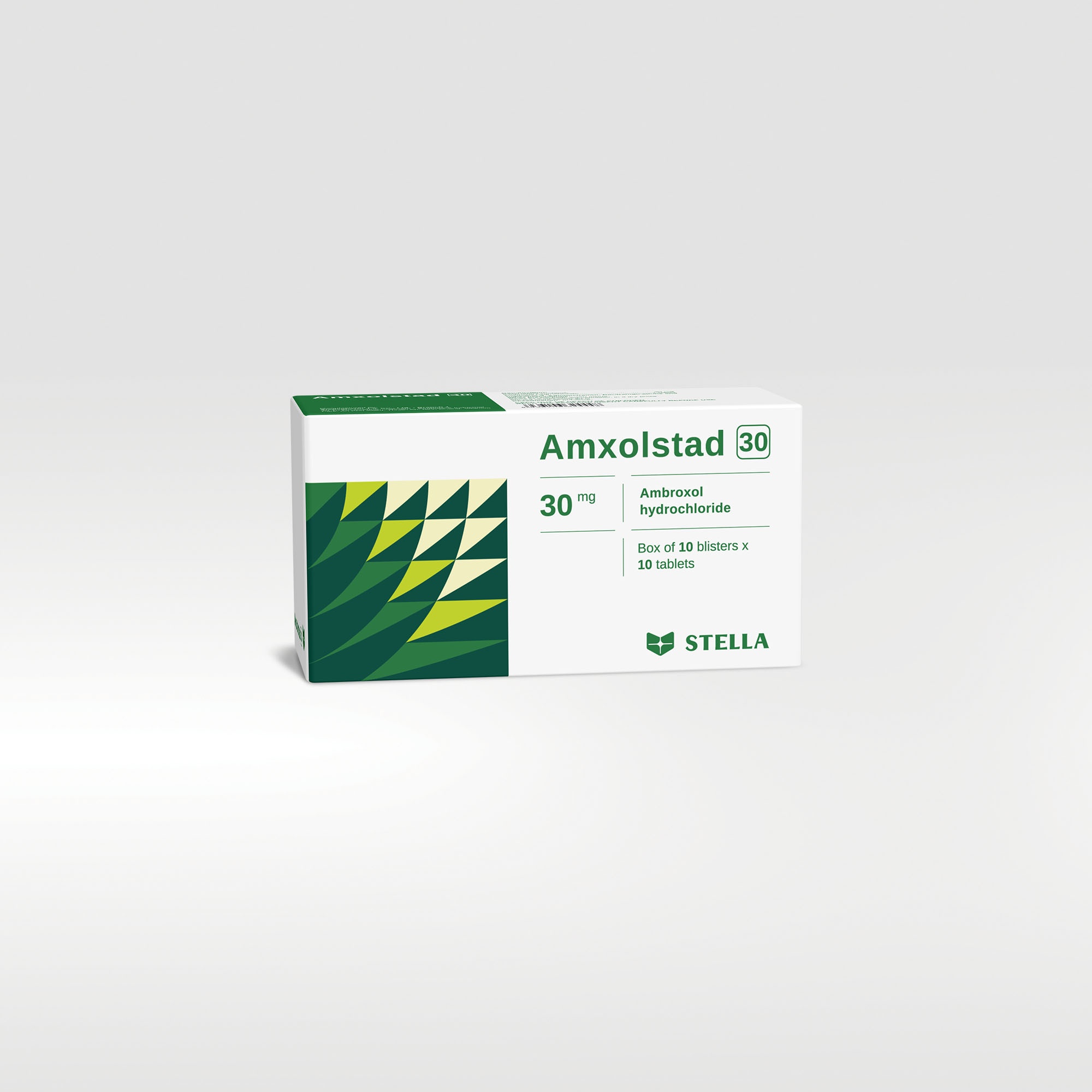Amxolstad 30 OTC
Ambroxol hydrochloride stimulates, through its action on secreting cells, bronchial secretion and promotes the production of more mobilizable mucus. It increases ciliary activity.
| Pack size | Box of 60 tablets, 100 tablets |
| Shelf-life | 24 months |
| Composition | Ambroxol hydrochloride |
| Dosage forms and strengths | Tablet: 30 mg |
Product code :








